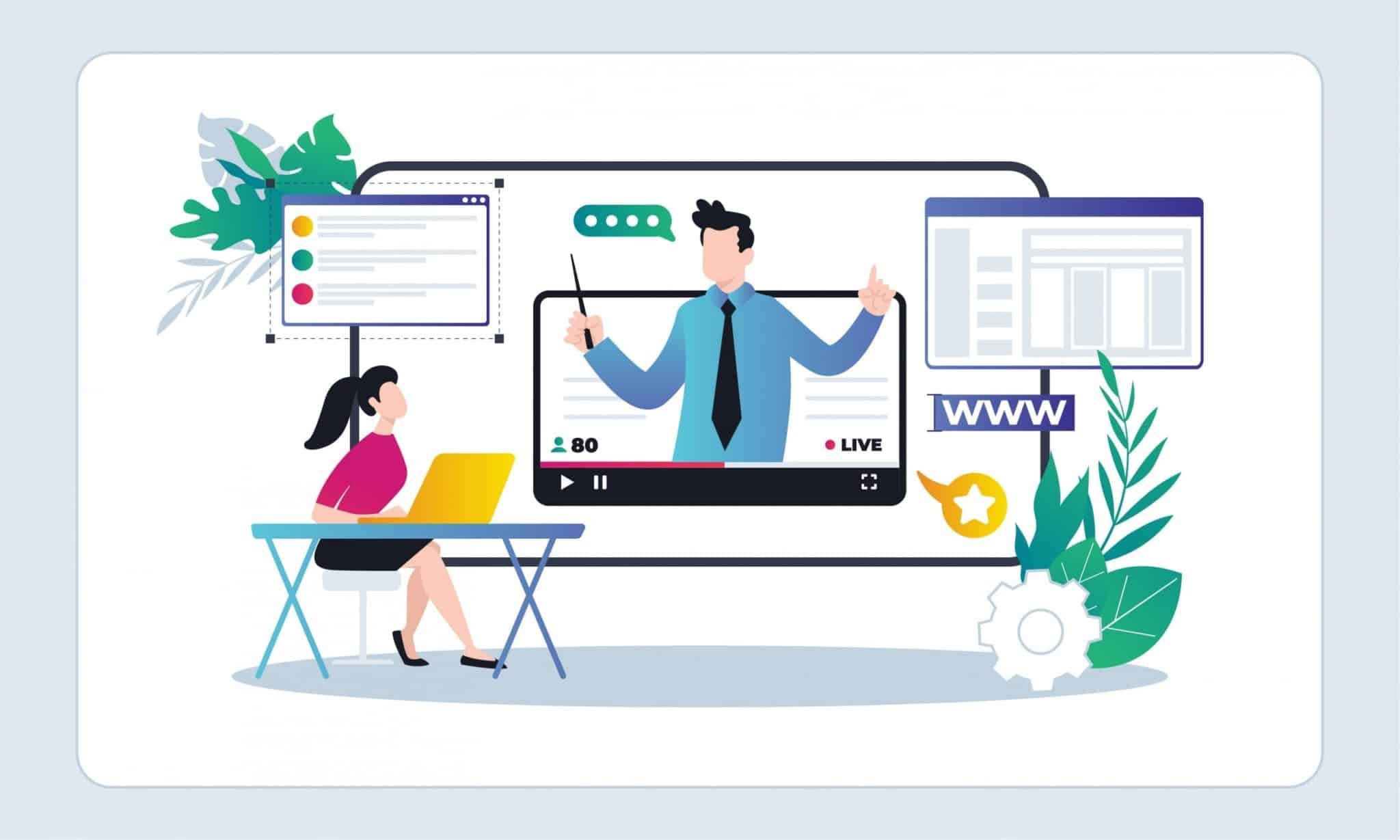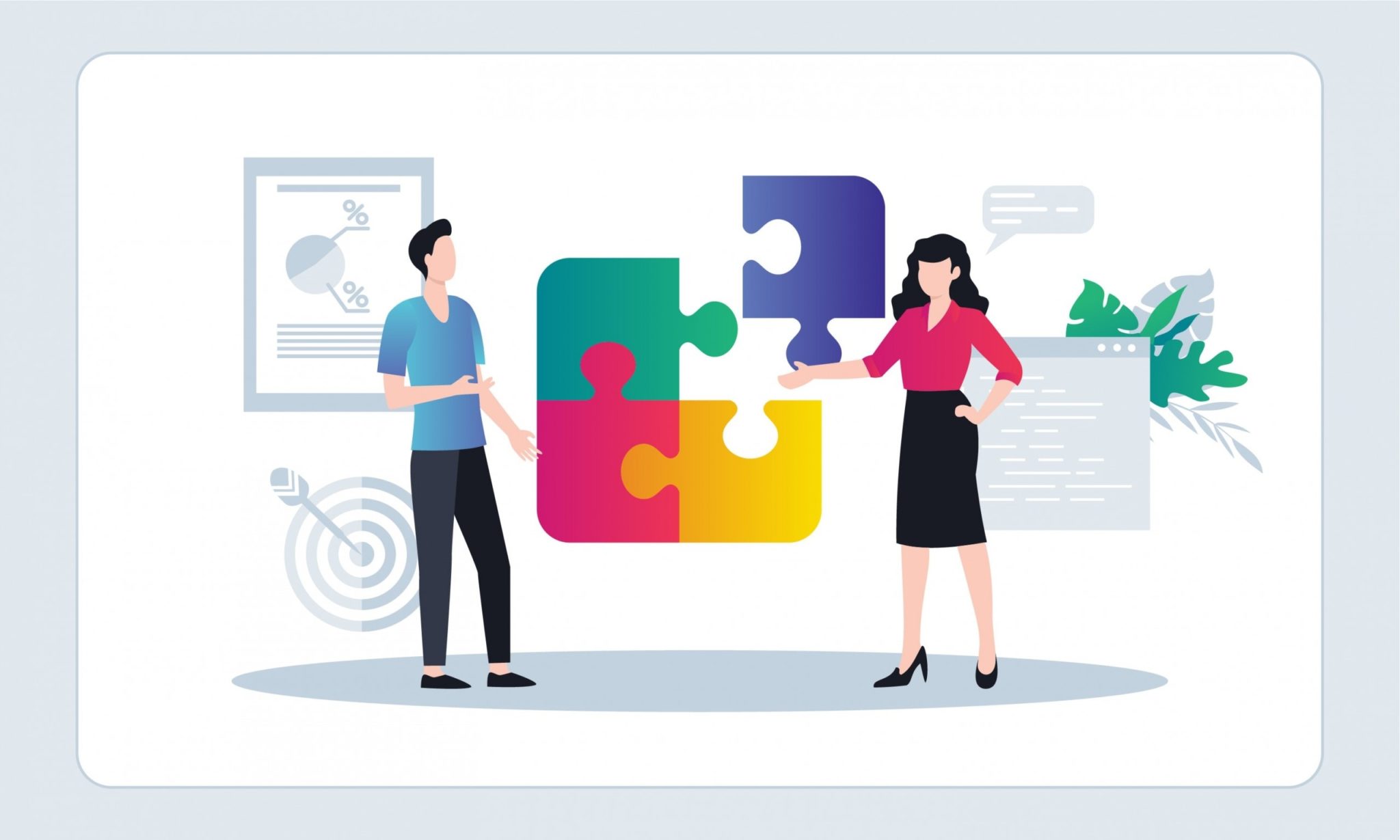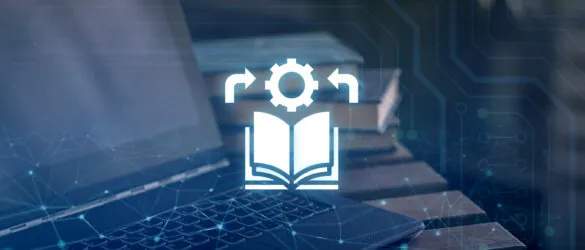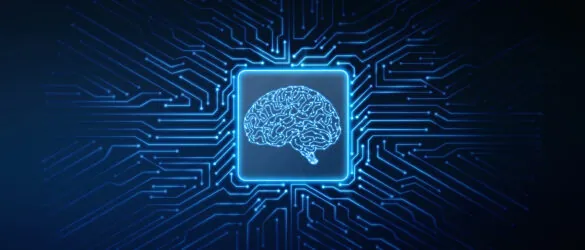Empower your business with a robust Learning Management System (LMS): the key to unlocking employee potential and driving corporate success through innovative online learning.
Key Takeaways:
- Enhancing Skills and Profitability: Implementing LMS in businesses can significantly improve employee skills and increase profits.
- Functional Requirements: Key features like gamification, multimedia content, mobile learning, usability, and social learning are essential for an effective LMS.
- Non-Functional Requirements: Focuses on system performance, including system requirements, hosting models, data security, payment gateways, and compliance with standards like SCORM, GDPR, FERPA, and ISO.
- Business Requirements: Involves authoring tools, certification offerings, e-commerce integration, and robust support systems.
- Documenting Requirements: Vital for clarity and vision, handled by business analysts through Vision and Scope (V&S) and System Requirement Specification (SRS) documents.
- Prioritizing Requirements: A systematic approach to defining the LMS's purpose, scope, function, user characteristics, limitations, and other specific requirements.
- Inoxoft"s Expertise: Offering comprehensive services in developing customized LMS solutions tailored to enhance learning and operational efficiency.
An effective Learning Management System (LMS) requires a combination of functional and non-functional elements. Functionally, it should support gamification, multimedia content, mobile learning, usability, and social learning features. Non-functionally, it needs to adhere to system performance standards, including specific system requirements, secure hosting models, robust data security measures, reliable payment gateways, and compliance with educational standards like SCORM, GDPR, FERPA, and ISO. Additionally, business requirements such as authoring capabilities, certification offerings, e-commerce functionality, and comprehensive support are crucial. Documenting these requirements clearly and prioritizing them based on the project's goals and scope ensures the development of a successful and comprehensive LMS.
- Functional Requirements of LMS
- Gamification
- Multimedia content
- Mobile learning
- Usability
- Social learning
- Non-Functional Requirements for Learning Management System
- System requirements
- Hosting model
- Data security
- Payment gateways
- SCORM/GDPR/FERPA
- Business Requirements for Learning Management System
- Authoring
- Certifications
- E-commerce
- Support
- Documenting LMS Requirements
- Documenting Prioritizing LMS Requirements
- Final Thoughts
- Consider Inoxoft Your Trusted Partner
For the obvious reasons, students have become the primary target audience of online learning. However, this advanced way of gaining knowledge can be useful and profitable not only for schools, but also for corporations. A survey among 2,500 global companies showed that “comprehensive training programs” led to a 218% profit increase. Therefore, implementing learning courses for employees will enhance their skills and benefit the company itself.
Clearly, EdTech has firmly entered the field with no turning back. It is expected that in only three years the online learning market will reach a 200% increase! Seems like learning management systems have become a hot topic of the decade: who didn’t try to complete a course online? In this article, we will discuss the functional and nonfunctional requirements for learning management systems and useful insights you would definitely like to know!
Functional Requirements of LMS
With the help of functional requirements, end-users are able to perform any task within the platform. Such user requirements for learning management systems describe the actions and behavior for specific activities. We present you some functional requirements of LMS that you should consider:
Gamification
Let’s just be honest — most of us associate the learning process with boredom. So why not try making it more fun? Gamification is an excellent tool to implement this idea. The achieved progress tracking, configuring milestones, ranking lists, leaderboards and rewards may lead to healthy competition among learners and motivate them to reach the top! This way, they definitely wouldn’t get bored or uninterested — who doesn’t want to earn extra points to outdo their rival? Jokes aside, the presence of games concept incentivizes students to not only continue their learning journey, but also make it more enjoyable and engaging!
Multimedia content
Visual type of learning is considered to be one of the most effective. With a wide choice of multimedia usage within the online learning environment, users are allowed to learn with the help of engaging visuals, texts, audio, video, interactive games, etc. LMS must provide an ability to upload recorded lectures, attach files in different formats, view presentations and post additional content.
Mobile learning
This feature is an excellent addition to our learning management system requirements checklist. Mobile versions for browsers or applications of LMS platforms make learning more portable and accessible. Therefore there is no need to be near the computer if there is a pressing need to answer questions, upload or grade assignments, solve technical problems, or simply resume the learning process.
Usability
An accessible design of the platform is one of the most significant LMS requirements. The platform should be scalable and adaptable to any device’s screen size, with no functionality missed. A perfectly made platform with an aesthetically pleasing interface is more crucial than providing content with up-to-date, valuable, engaging courses. No top lecturer will make people use your Learning Management System if there are annoying lags and irritating color schemes of the UI. Hence, a user-friendly interface is a key to creating successful LMS software.
Social learning
When we are talking about learning management system requirements, we can’t ignore this feature right here. Being social creatures, humans desperately need a feeling of community with a strong network of support wherever they are. The social learning feature greatly enhances the organization’s learning environment and adds more teamwork. Thanks to that, colleagues can communicate with each other, share their opinions on different topics or have a good laugh at a brand-new meme. All in all, this feature influences the learners’ motivation and engagement in discovering educational content.
Non-Functional Requirements for Learning Management System
For their part, non-functional requirements define the whole system performance and pay precise attention to users’ expectations. Non-functional requirements of learning management system may include the following:
System requirements
You really need to dwell on LMS system requirements. The main question is: How to make the platform perform smoothly on the user’s operating system, depending on its capabilities? We may actually narrow the list to HTML5 compatible browsers (Chrome, Safari, Firefox) and connection to the internet with 500+ Kbps.
Hosting model
A vital addition to the LMS requirements list is choosing where to locate the system. For instance, if you decide to host your learning management system in the cloud, you provide it to a wide variety of users. Moreover, web service providers shoulder the responsibility of security questions, not you, so consider it a minus one headache you might face during the LMS development.
Data security
Naturally, LMS is filled with personal information, social security numbers, copyright content, and so forth. Such data looks exceptionally appealing to cyber criminals. Thus they may easily jeopardize it if LMS security is weak. You must provide protective measures, including two-factor authentication, password validation, role-based access control, and IP-blocker.
Payment gateways
A payment gateway is a front-end technical solution allowing users to quickly process payments within the platform. In fact, they are not hard to set up and rather have a simple structure of payment procedure. Some of the most popular are PayPal, GoMerchant, Authorize.net, and CyberSource.
SCORM/GDPR/FERPA
Hopefully, the number of acronyms didn’t scare you away. It’s no secret that every software needs a loyal certification and international standards. Thus, you can verify the platform’s functionality’s conformity according to the specific requirements of communities, states, and various entities. Make sure your LMS complies with:
- SCORM (Sharable Content Object Reference Model) consists of the collection of eLearning standards that defines communications and exchange of content between client-side content and the LMS host system.
- GDPR (General Data Protection Regulation) is the security law of the EU that imposes the process and protection of personal data related to the people of the European Union.
- FERPA (Family Educational Rights and Privacy Act) is a government regulation in the USA that protects students’ educational records.
- ISO (International Organization for Standardization) certification guarantees global standards credibility of the platform among users, stakeholders, and partners. You need to keep an eye on the 9001 certification that imposes the management system quality. Also, don’t forget about 27001 — this certification proves the management system’s security.
Business Requirements for Learning Management System
Finally, business requirements for learning management systems are the requirements that define the project’s direction. They include the business motive to achieve desired goals, whether it’s increasing revenue or increasing the target audience.
Authoring
An LMS is a possibility to create a community and pass the knowledge to others who are willing to learn! The development technology takes into account management features such as the creation of courses, uploading materials, and other managing tools for creating a decent course. Also, ensure that the author signs every content added to the platform. This way, they take full responsibility for the information they provide.
Certifications
As a part of a reward system, issuing certificates is a great way to motivate people that their learning results will be documented and used in the future. LMS may provide such certificates that indicate a person’s competence in a specific field after passing a test at the end of the course.
E-commerce
Forget about NFTs – you can make your own marketplace within the LMS system! Applying the e-commerce functionality helps to make course shopping more simplistic. With the help of a personal account, system users can browse catalogs and purchase courses they want. You can also think of integrating a Shopify, so that people can benefit from providing their author’s courses.
Support
With an enormous amount of learning resources, a help center is a must. Users might find it hard to get to know your LMS system. For this reason, provide a clear guideline for using the platform and an ability to address the possible issues and challenges.
Documenting LMS Requirements
The importance of learning management system requirement specification is hard to overestimate. Why do you need it? And how to do it right? The answers are right below!
There are two major documents that you need to know while considering an eLearning project development: V&S (Vision and Scope) and SRS (system requirement specification). Documenting LMS requirements can help structure all of your ideas and get a clearer vision to share it with the developers.
The responsibility of writing and managing goes to the business analyst. The first document comes in handy at the very early stages – it contains the description of the product’s purpose and a list of features that we need to implement them. The latter one is related to the project’s detailed description and its roadmap. SRS enters the game a bit later and estimates resources that we need to finish the project, including time and money. Also, it provides an extended description of major features of the platform.
Documenting Prioritizing LMS Requirements
The next tricky question is to prioritize the documenting of LMS system requirements and not mess them up. Here’s a list of steps you should take while working with the documentation of LMS requirements:
- Project’s main purpose. Ask yourself: What do you want to achieve with this solution? What problems does it solve? What is its target audience? The document has to include a detailed and clear description of the main LMS software functionality requirements, which you must update during minor changes.
- Project’s scope. Specify the software’s name, purpose, goals, and benefits. All of that should stay consistent with other documents to avoid confusion. You think of the number of roles the platform will have and the relevant features to complete those roles. For example, an administrator should be able to manage users; mentors – to create courses and manage related processes; learners should have onboarding features, access to profile management, add widgets, use calendars, chat and have notifications.
- Project’s perspective. It describes products’ relation to other software. Imagine your product is a part of a more extensive suite. That means you really should explain the links between different elements, such as system/user/hardware/software/communication interfaces as well as requirements for site adaptation.
- Project’s function. A detailed and clear description of the product functions would be the next step. Basically the same information that you get from V&S document: signature functions of LMS. Those may include managing courses and users, creating skill matrices, etc.
- User characteristics. What is the product’s target audience? Create your users’ portraits by considering everything that is related to the interaction with the LMS platform, including technical skills, field of education and so forth.
- Limitations. List the factors that will impose constraints on the development and operations of the complete product. Those can be laws and regulations, audit and control functions, quality requirements and hardware limitations, interfaces to other applications, safety and security considerations, etc.
- Detailed description. Finally, you can detail all the software requirements to help the developers, designers, and testers understand their tasks. The description must include the system’s input and output and product functions of the product that are related to them.
- Other requirements. You might also want to include usability and overall performance requirements. The first focuses on the user’s expectations of using LMS, such as the fast page load or smoothly working tab. The second worries about the static and dynamic numerical requirements, like capacity and users engagement.
Final Thoughts
Creating a successful and high-quality LMS can be a tough challenge since it requires lots of resources, creativity, and enthusiasm. Still, nowadays, there are the most favorable conditions to create an eLearning educational platform. Just think about it: you can contribute to the improvement of EdTech for the better! And having a detailed list of requirements you want to implement in your projects is an excellent practice to make it real. Find an awesome development team, and the success is right in your pocket!
Consider Inoxoft Your Trusted Partner
Inoxoft is an international software development company that has already developed numerous educational projects for startups, businesses, and institutions. Since we have valuable experience implementing gamification and language e-learning software, we offer education software development services, including E-learning software development, Learning Management System Development, and School Management Software Development.
Our team will help you build top-notch LMS software for your company or institution that will allow you to:
- Enhance communication
- Monitor performance with e-gradebooks
- Assess and distribute assignments
- Integrate your LMS with platforms you need
- Use scheduling and tracking tools
- Enjoy a scalable content library in a cloud
And so much more! If you are looking for a reliable partner to develop a Learning Management System, Inoxoft is glad to help you! Contact us to get started!
Frequently Asked Questions
What are examples of functional requirements?
Functional requirements for learning management systems describe the actions and behavior for specific activities. We present you some functional requirements of LMS that you should consider:
- Gamification
- Multimedia content
- Mobile learning
- Usability
- Social learning
What are business requirements for learning management systems?
Business requirements for learning management systems are the requirements that define the project’s direction. They include the business motive to achieve desired goals, whether it’s increasing revenue or increasing the target audience.
- Authoring
- Certifications
- E-commerce
- Support
Are there any LMS security requirements?
Of course! LMS is filled with personal information, social security numbers, copyright content, and so forth. You must provide protective measures, including two-factor authentication, password validation, role-based access control, and IP-blocker.
Every software needs a loyal certification and international standards. LMS must comply with GDPR (General Data Protection Regulation) — it’s a security law of the EU that imposes the process and protection of personal data related to the people of the European Union.











